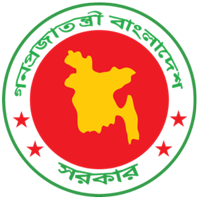Urban children miss out on routine vaccination

The numbers speak for themselves. In Bangladesh, children in urban areas are less likely to receive all the routine vaccines compared to children in rural areas. However, zooming in on district level the picture is far more diverse, and complex. This calls for more research.
The urban-rural immunisation inequity in Bangladesh is nothing new. The immunisation coverage from the Expanded Programme on Immunisation (EPI) Coverage Evaluation Surveys (CES)1 indicate a persistent gap between urban and rural rates. In 2016, the urban immunisation coverage was 77.1% compared to 83.5% coverage in rural areas. In 2019 these urban and rural immunisation coverage rates were 79.2% and 85%, respectively. The urban immunisation became a focus point of the WHO Joint National/International EPI and Vaccine Preventable Diseases Surveillance Review2 in Bangladesh in 2018.
The review emphasises the challenges of urban immunisation, indicating that in 2016 only 4 out of 11 city corporations manage to fully vaccinate at least 4 out of 5 children, while in Dhaka city almost 2 out of 5 children go without full coverage. These inequities reflect the fragmented provision of immunisation services in urban areas. The challenges need to be addressed, even more so in the knowledge that Bangladesh’s urban population is expected to increase from 53 million in 2016 to 80 million by 2028.
The government is aware of the problems: shortage of trained healthcare staff, the complex structural setup between local governments, NGOs, and private sector, the lack of communication and the limited resources. The differences in immunisation performance between city corporations show that improvements are feasible. The appointment of dedicated immunisation staff by Rajshahi City Corporation has resulted in a substantial increase of coverage rates. It now shows 92.4% full coverage and even 98.4% coverage for all doses of the Pentavalent (DTPcv) vaccine.
Helal Ahmmed Joni, an immunisation district coordinator for the Family Planning Association Bangladesh, hopes his Dhaka South City Corporation will follow Rajshahi’s example. Having more medical officers at city corporation level would help to improve the communication with government, and ensure better coordination and collaboration between the various NGO immunisation services and private clinics. His fieldworkers regularly complain that private clinics do not provide vaccination cards to children born at those clinics, or that vaccinators from other immunisation centres refuse to share information on children’s vaccination status. Better coordination and vaccination training would certainly support service providers to increase the coverage rate among poor city dwellers in Dhaka South, which lags some ten percentage points behind Rajshahi city.
Having a closer look at the immunisation rates of city corporations, municipalities and districts, discloses large differences in performance, both between urban and rural areas and among them. Rajshahi’s coverage rates are actually slightly higher than the rates of Barisal, the best performing district according to CES 2019. On the low end of the scale, the rate of Khulna district comes very close to the one of Sylhet City Corporation, both scoring less than 65% full coverage.
Numbers speak for themselves, but they sometimes hide different stories. Analysing immunisation coverage data at the national level will provide different insights compared to data analysis on a district or sub-district level. The Khulna district and Sylhet city both need to improve their immunisation performance, but they might identify totally different barriers to reach the same goal: identifying and reaching the children who so far did not receive a single dose of routine vaccines and those who have only received part of those vaccines.
More in-depth research and analyses on immunisation equity are needed. In Bangladesh the process is ongoing. Gavi, the Vaccine Alliance has initiated a Country Learning Hub project in collaboration with the government of Bangladesh. The country‘s international health research institute icddr,b is taking the lead. A rapid assessment of immunisation data from CES and other sources is almost finalised. Based on these data, specific districts with low coverage rates and high numbers of zero-dose and under-immunised children will be selected to fine tune intervention strategies to be able to increase the coverage rate in both rural and urban areas. Because that is what counts: no child should be left behind.
References
- 1Expanded Programme on Immunisation (2016 and 2019). Directorate General of Health Services (DGHS). Bangladesh EPI Coverage Evaluation Survey
- 2World Health Organisation Regional Office for South East Asia.(2019) Joint National/International Expanded Programme on Immunisation and Vaccine Preventable Disease Surveillance, Bangladesh 28 July-6 August 2018









